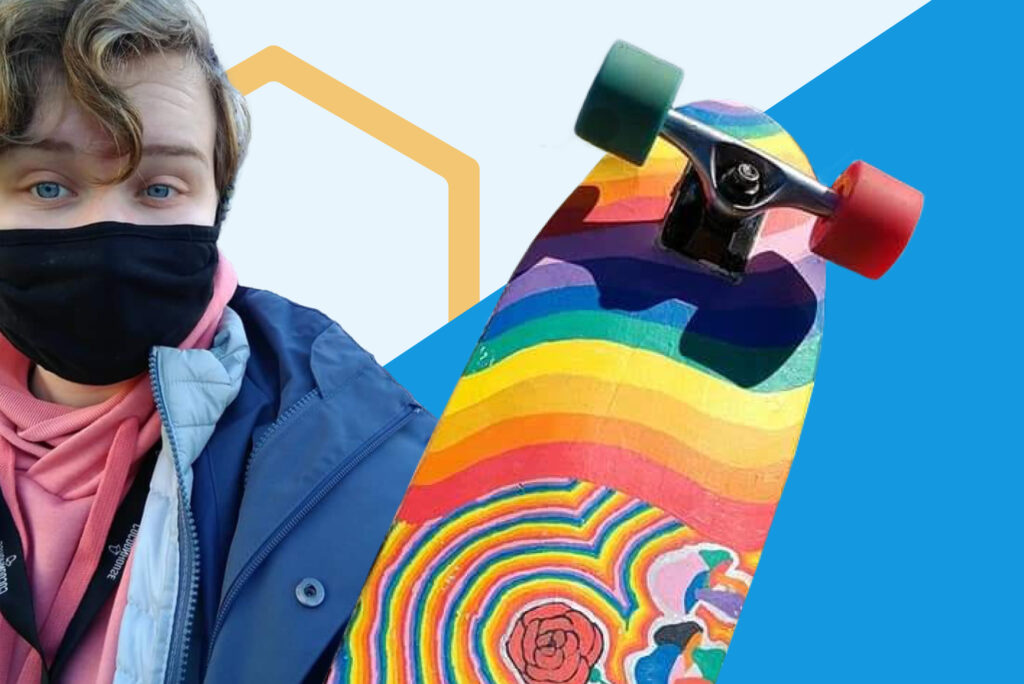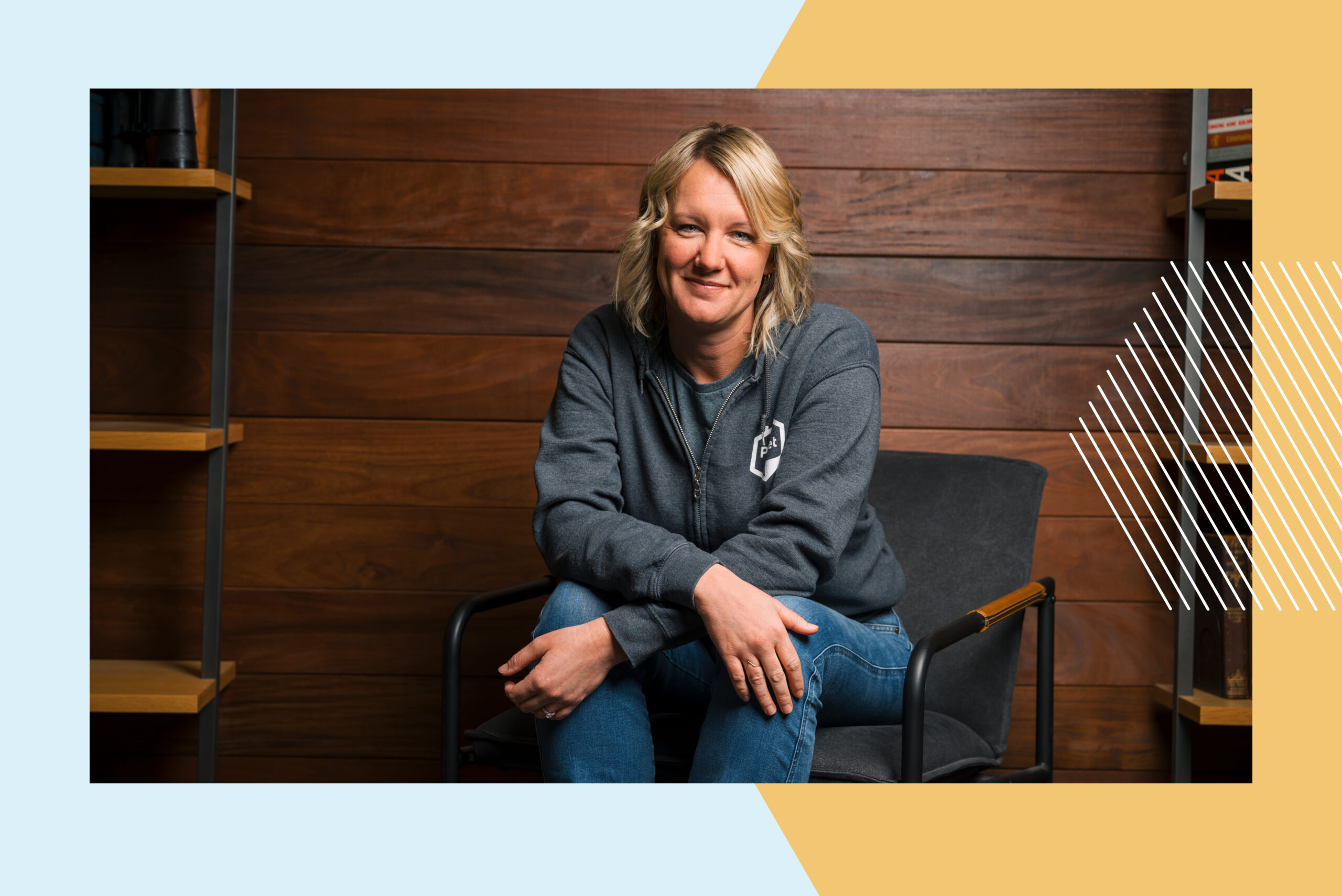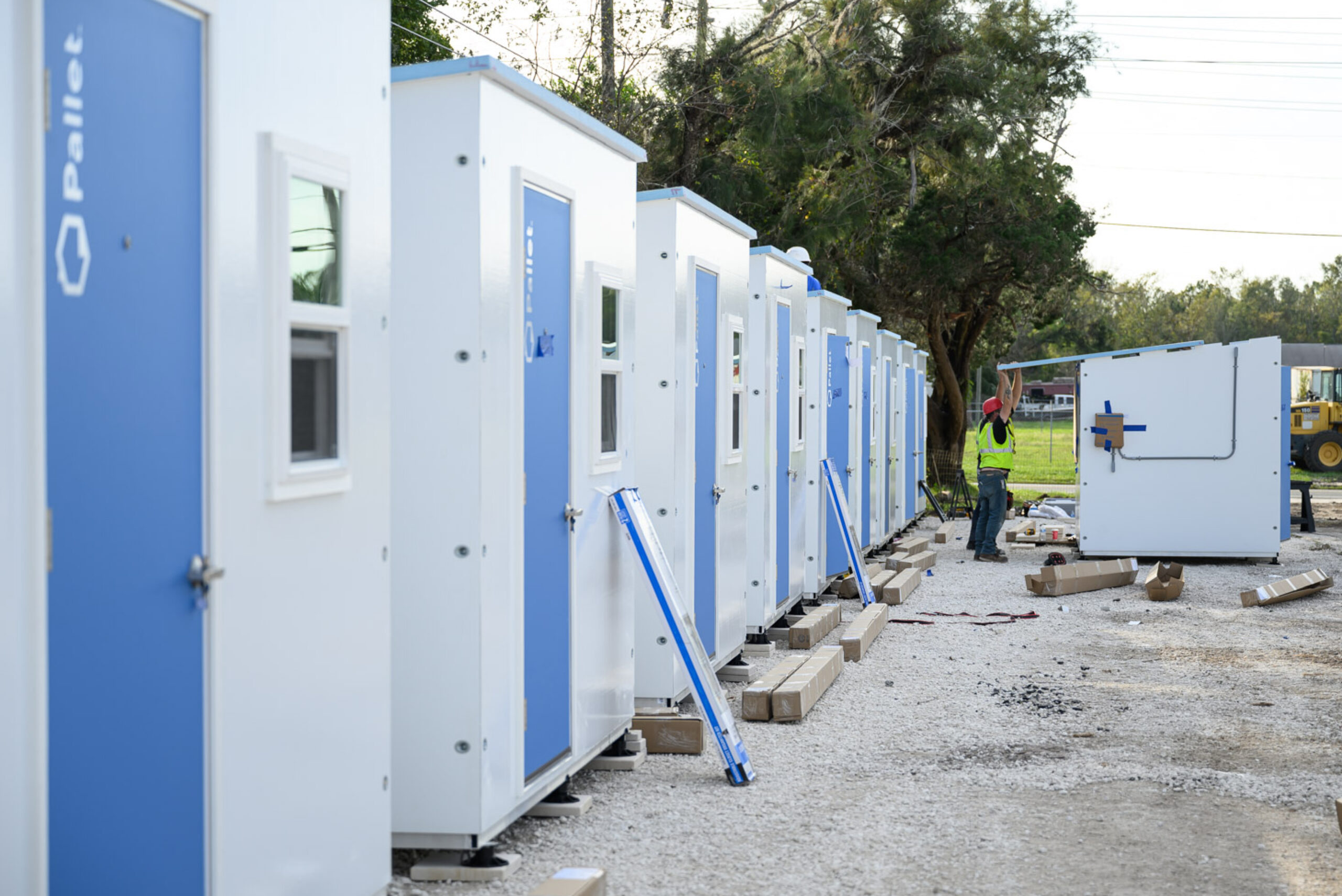How outreach to unhoused youth can impact their lives
June 15, 2022

Across the country, tens of thousands of youth don’t have a fixed place to call home. A 2020 count showed there were 34,210 unaccompanied youth experiencing homelessness. Ninety percent were between the ages of 18 to 24. It’s estimated 22 percent identify as LGBTQ+. According to the National Alliance to End Homelessness, youth homelessness is often rooted in family conflict. Other contributing factors include poverty, housing insecurity, and involvement in the juvenile justice system.
For two years, Sarah Allen worked as the Street Outreach Specialist at Cocoon House, an Everett, Washington-based nonprofit organization focused on the needs of at-risk young people (18 to 24-years-old). Their team provides short and long-term housing, outreach and prevention services.
Pallet talked with Sarah about her role as an advocate and former position. While there, she went into the community, especially skateparks, to provide unhoused youth food, supplies and talk with them about the services offered at Cocoon House. She was critical in ensuring that people across Snohomish County — a mix of urban and rural areas — were aware of the resources available to them. She shares what it was like to work with youth, lessons she’s learned, and common misconceptions about homelessness.
This interview has been lightly edited for length and clarity.
Pallet: How did you approach the youth you saw in the community? How did you build these relationships?
Sarah: Well, the first thing I do is make sure that I am not wearing really formal clothes. I'm not wearing dress shoes, I'm not wearing khakis. I'm not tucking in my shirt. Also in my appearance, I look younger. I was kind of younger, so I didn't seem much older to them. And in addition to that, I would go to skateparks and I would go to places where youth would be hanging out. There was consistency as well. For example, the Lake Stevens Skatepark, there's just a lot of teenagers that hang out there. I would go at the same time every Wednesday for a while, just connecting with people, handing out stuff to the point where the kids would feel comfortable approaching me.
There's a difference of need between someone who's 14 and someone who's 18. So I just made sure when I gave my little spiel or my elevator speech about it, it was applicable to them. And a lot of people might not understand what homelessness is.
Pallet: What did you consider a successful day?
Sarah: A successful day to me was really being able to connect with someone, a youth in particular, give them my card and then see them come into our drop-in center or our shelter or get sheltered. It always made me feel like I did my job right.
Pallet: The percentage of youth experiencing homelessness who are LGBTQ+ is high. Did you change your approach for those individuals?
Sarah: If I could tell, I would add that Cocoon House is an LGBT friendly place. We have people who identify that way as staff and then also just our culture in general, very respectful. For example, we had a youth in our parenting and pregnant shelter in Arlington, and they were a trans man, but they gave birth to their baby before they transitioned. And so I think about that particular person a lot and think, ‘Wow, that was really hard to do.’ And to be in a place that was safe enough for you to stay there for a long time, it really makes a difference versus other shelters that may not be as welcoming or be able to supply you safety for long periods of time.
I also wore a lot of rainbow pins on me and other kinds of signaling outfits as well. So that way it was more obvious to folks. I would let them make assumptions about me because they would be right. Because when you see someone who has a rainbow flag, you feel a little bit safer.
Pallet: Are there any lessons you learned while working in outreach?
Sarah: Yeah, I think actually I grew as a person and had a better understanding, in-depth understanding of community needs. Being able to see the range of different experiences because a lot of people just lump all homeless people into one box. That's not really fair because every single person is different. And it really helped me learn the difference between true compassion and pity, which is the antithesis of compassion. When I first started, I had pity. And I think a lot of people do not understand how limiting that is for folks. Like, ‘oh, I feel sorry for you.’ Compassion is saying, I see you and I hear you and you can do it. You're empowering them and you believe that they can do it.
I also learned a lot about street culture. There was a book [Street Culture 2.0: An Epistemology of Street-dependent Youth] that I read that was really impactful. The book would talk about how people perceive time when they're homeless, like all these other things that we don't see because we just judge people while we drive past them, while they have a sign up.
I think another lesson I learned is truly just listening and not assuming people's needs.
Pallet: What are some of the misconceptions people have about youth experiencing homelessness?
Sarah: One is drug use. ‘They use drugs, that's why they get kicked out and that's why they're using drugs on the street and that's why they're homeless.’ A lot of people have turned to drugs to survive being on the street. That's not the drugs causing them to live on the street. [They’ve said] ‘I'm on the street now and I have to stay up during the night time so the cops don't catch me or I don't get things stolen from me or I don't get hurt. So I have to take this substance to stay awake and I need to take this substance to go to sleep.’ I think that's something a lot of the regulars that I saw, they were using drugs because they just wanted to survive, which seems counterintuitive, but if that's what you got you're going to use it.
Another misconception is rebellion or youth are not listening and they deserve to be homeless. Some people think that, ‘oh if you just listen to so and so, if you just did this or that, then your life would be fine.’ People who are in the cycle of homelessness, I would say 90% have experienced some kind of physical, sexual, emotional abuse at some point, a lot of violence in life. Everyone just sees homelessness as the end result when there could have been a lot more steps preventing that person being on the street.
Also, I would argue that there's not a lot of things to do as a teenager and during Covid it was even worse. I feel like that also contributes to just lack of community and lack of belonging, lack of connection. At 18, everyone says, ‘oh, yeah, you're an adult now and just figure it out.’ I think that's really cruel to do to folks.
Another misconception is about using the fact that they have phones or maybe they might have a car or they might have things that might be considered luxury, but those things are necessary. Like, ‘oh, they should just sell their phone so they're not hungry.’ Everyone thinks that you should give up your items so easily. But how does someone get a job or contact people they need if they don't have a phone on them? Access a bank account, et cetera. I think everyone just wants them to look a certain way and be a certain way. And when people challenge that, they're very confused.
Pallet: What are some of the challenges the youth you worked with faced?
Sarah: The part about homelessness that people may not understand is that there's nothing that's your space and that you can claim for yourself. You're on someone else's couch, you're in someone else's car. It's very limited for you, especially if you've had a privileged life and then you don't. All of a sudden it's very shocking. You always feel like you’re in the way. It's very lonely, and you feel like everyone is kind of like communicating around you and not to you. And also there's just a lot, a huge amount of shame. I think that's the number one thing.
Pallet: What was your favorite part about working in outreach?
Sarah: I really enjoyed just interacting and talking to the youth that I was with and being able to just hang out with them, especially in the drop-in center that I worked in. I think that was my favorite part because I can actually hang out with them and talk to them for more than 30 seconds to a couple of minutes. I can see their personalities. I can see the difference in a good day and a bad day. I can learn what their favorite drink was or snack was. And maybe I was able to cheer them up by finding it for them, see them improve and reach their goals, be with them when times were hard.
I even got a Facebook message from one of the youth that I connected with recently. He said, ‘I really want to thank you for being there for me. Without you (and he named a couple other staff) I don't think I would be here.’ And now he's doing way better and living in Oregon and making improvements in life and moving forward, which I think is great. But I didn't do anything exceptional. I didn't give them a lot of cash. I didn't give them a miracle. I just showed up.
Pallet: What would you suggest someone do to specifically help young folks?
Sarah: I would definitely encourage folks to really reach out to organizations where they can spend time, face to face with youth by either mentoring, hanging out with them, maybe even sharing life skills with them for example. I know during Covid it's not always doable, but there's other programs like donating a meal, finding organizations that just lend a hand to folks. And really I would encourage people to step out of their comfort zone just a little bit more because I think a lot of people don't. They just drive past or walk as quickly as possible avoiding anyone who seems like they might need help instead of actually talking to them for a minute or maybe saying, I hope you have a good day or anything positive.
Pallet: As you were talking. I was thinking yeah, mentorship would be incredibly helpful.
Sarah: And I think it's really important that there's lots of representation of different communities as well, because as a cisgender woman who is White, I can only reach someone so far. There should be more volunteers and other mentors to reflect the community that they're in. More folks who can speak Spanish, more folks who can sign, more folks who are neurodivergent. Because there's a lot of need and a lot of different kinds of folks, and some people can just understand others better than others can.
Pallet: Is there anything else you'd like to add?
Sarah: I think there's one thing people can do. Be kind, listen and believe people when they tell you their story, even if it doesn't match your expectations.
Today Sarah works at Stanwood Camano Food Bank as a Program Coordinator. She’s assisting housed and unhoused youth and adults in this role.
How Pallet shelter villages have a positive impact on mental health


